Aragonese technicians enter MNAC to study transfer of Sixena paintings
50 pro-independence protestors gather outside museum to protest against removal of artworks

Technicians from the Aragonese government – the Spanish region immediately west of Catalonia – entered the Catalan National Art Museum (MNAC) on Monday morning to study and analyze the Sixena paintings ahead of their court-mandated transfer from Barcelona to Aragon.
Sources from the Aragonese cabinet said that the experts entered shortly before 11am and started the photogrammetry process, recording and screening the medieval murals in the Catalan museum.
The technicians entered the museum via a side door as opposed to the main entrance or office entrance, where some 50 pro-independence supporters were gathered to protest against the removal of the paintings from Catalonia and forced return to Aragon.
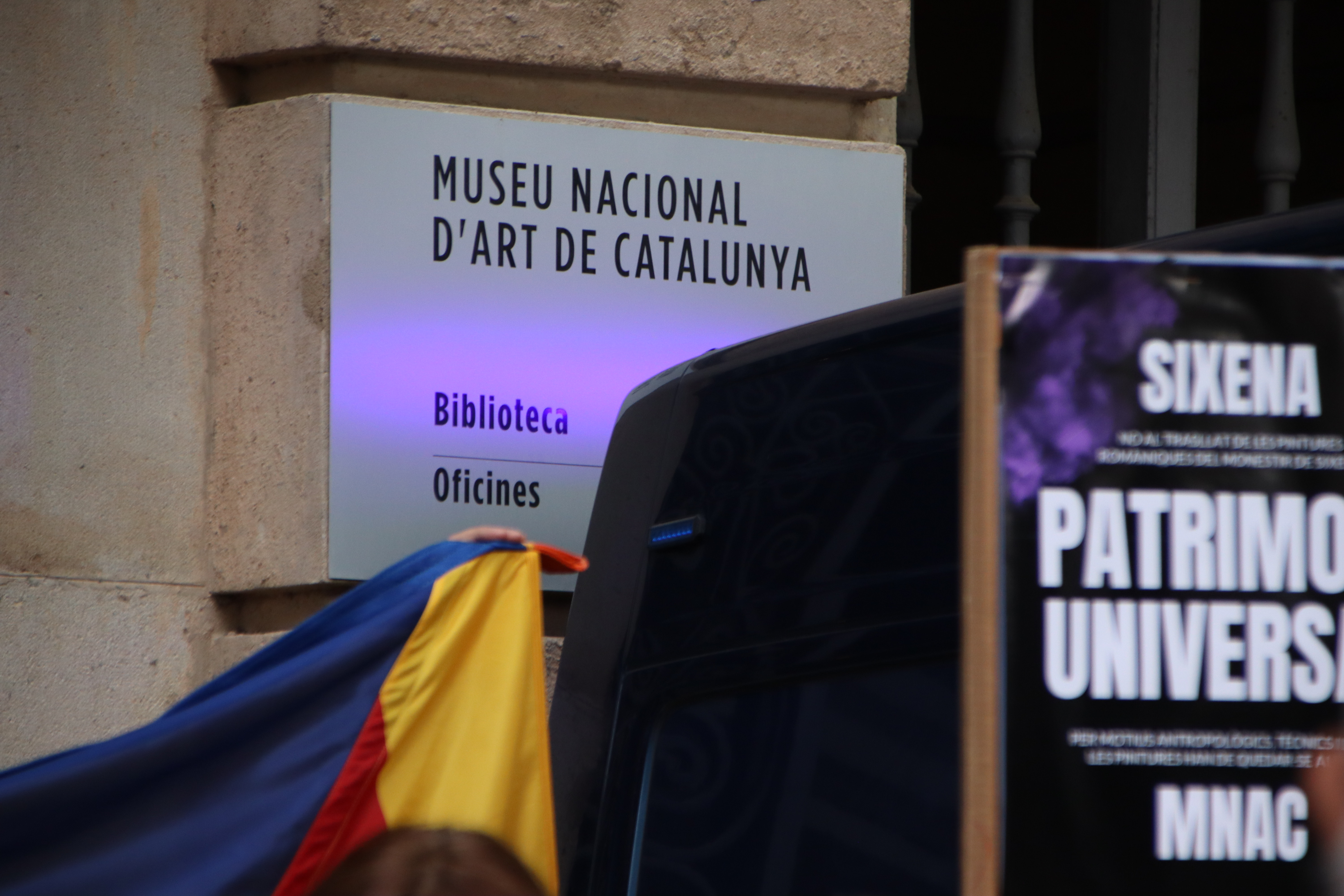
Protesters included members of the pro-independence party Junts – including former Parliament speaker Laura Borràs – and representatives from the Catalan National Assembly (ANC), the Council for the Republic, and the Association of Municipalities for Independence.
Four Mossos d'Esquadra police vans were present at the scene.
Aragonese statement
The Aragonese government explained in a statement that technicians began work on Monday to carry out surveying of the murals, "to precisely determine the dimensions, texture, and true color" of the artworks, in order to "facilitate their future treatment and installation in the monastery."
The technical team, led by conservator-restorer Natalia Martínez de Pisón and including members of the photogrammetry laboratory at the University of Valladolid, entered the museum at 10:50am, where they were received by the museum's head of security.
According to the government,and at the request of the MNAC, the technicians first worked in Room 17, where secular paintings are located, before moving on to Room 16, where the murals from the chapter house of Sixena are displayed.
Using a lift, they scanned the works to record geometric data on their exact dimensions, surface, and texture.
This, they explained, will allow for the creation of a map of the surface.
Following that, photogrammetry is carried out – a technique that overlays images to determine the true color of the works.
In addition, in Room 16, they will examine the anchoring systems used for the pieces. Work will continue until Wednesday.
"Tension"
The Director General of Culture for the Aragonese government, Pedro Olloqui, stated that there was at first "a certain amount of tension due to the heavy surveillance the technicians were under, as well as restrictions on their movement within the museum."
However, he added that the situation soon relaxed, and the technicians were able to carry out their work “in a respectful, normal atmosphere."
Olloqui said that they will carry out their work, "which will culminate in the transfer and installation of the paintings at the Monastery of Sixena."
"Plundering"
The protesters positioned themselves at the entrance to the museum's offices, where the technicians had been expected to enter.
Speaking to the media, the president of the ANC, Lluís Llach, said they had gathered to oppose what he called the "plundering" of the Sixena murals, which he described as a "symbol of Catalan culture."
"We're surprised by how boldly they are going against all the technical advice and assessments that have been issued," he said.
Llach called on the people of Catalonia to oppose the move. "We are willing to continue fighting to try to prevent this looting," he added.
He also criticized the Catalan government's "inaction" in the judicial process, arguing that it should have opposed the transfer by filing an appeal with the Spanish Supreme Court.
"The government's inaction in a case that involves Catalan heritage such as the Sixena murals is unforgivable," Llach said.
The protest was a "symbolic" act but "a warning," he added.
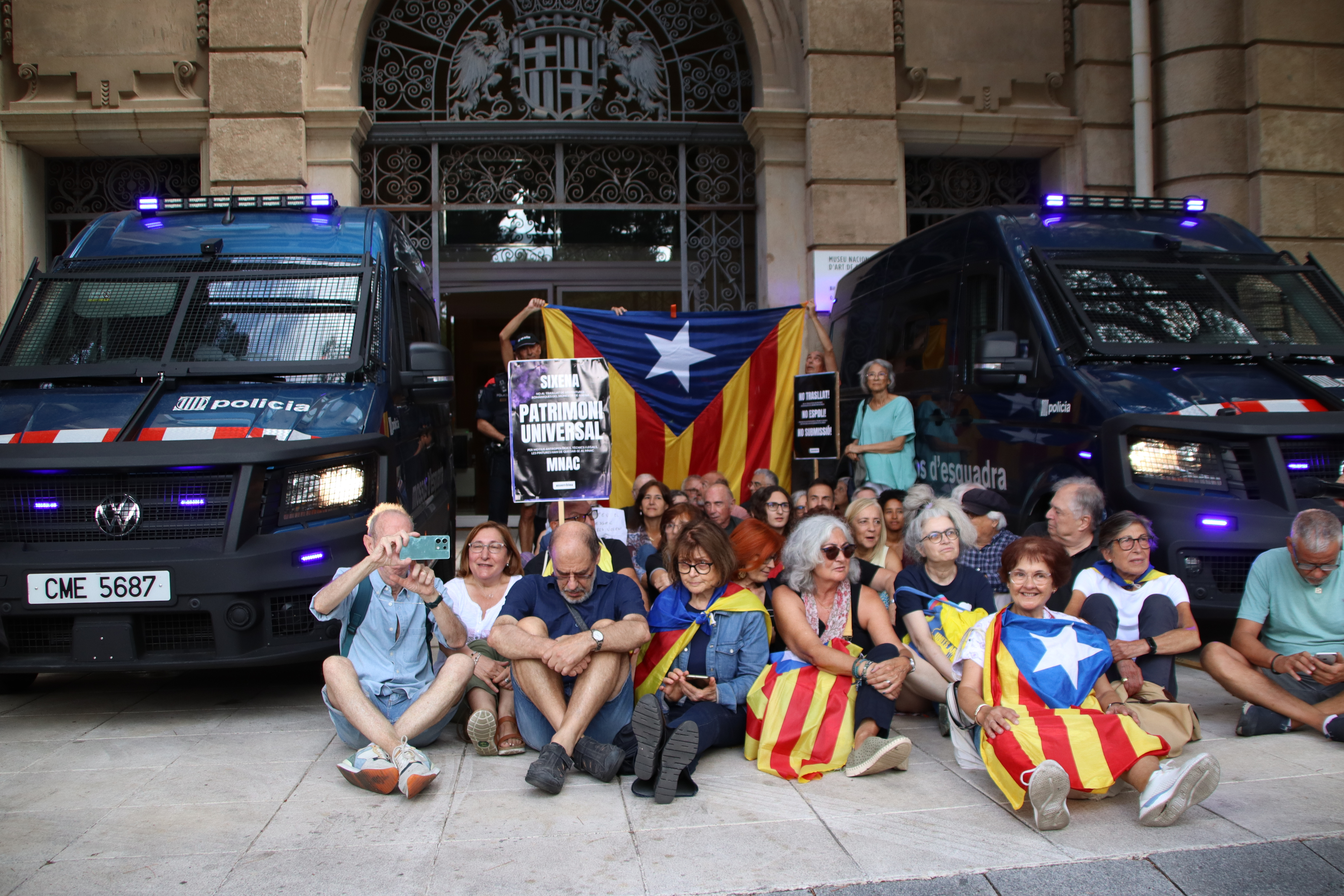
"Today, we didn't even intend to block the entrance, because they're not coming to take anything, just to look and see what's going on."
Around 11am, with the technicians already inside the museum, the demonstrators left. Shortly after, the police officers guarding the entrance also left.
MNAC frescos
The murals in question are from the Chapter House of the Sixena Monastery in Aragon and date back to the year 1200.
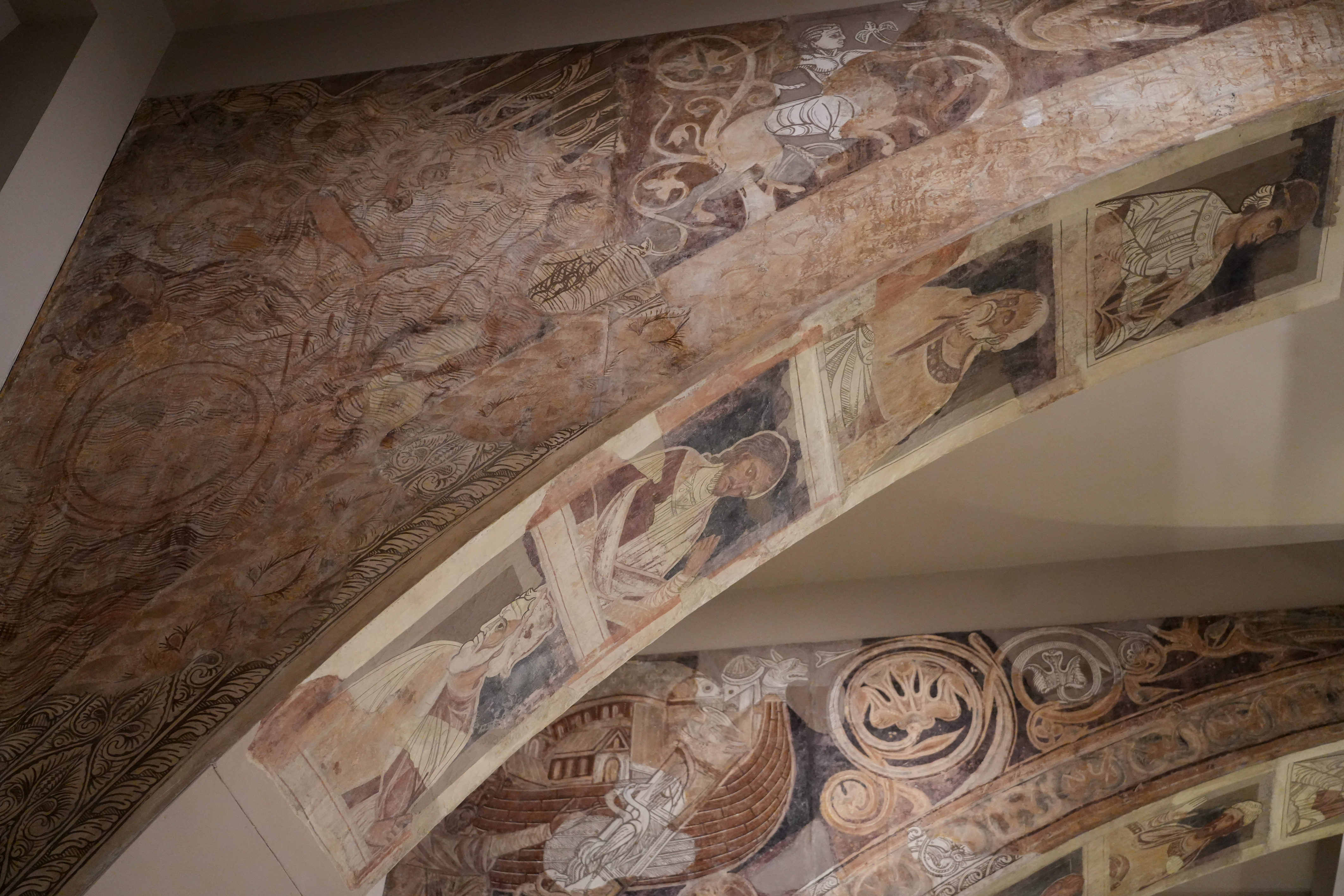
They are a "unique, most important example of medieval Hispanic art,” according to the MNAC, and depict scenes from the Old and the New Testament, including scenes of God showing Paradise to Adam and Eve, and the Resurrection of Christ.
Origin of the conflict
The dispute over the frescoes stems from a 1995 decision by the Vatican to transfer 111 parishes, one of which was the one in Sixena, to the Diocese of Barbastro-Monzón in Aragon that until then had been part of the diocese of Lleida in Western Catalonia. Later in the 90s, the artworks were purchased by the Catalan government.
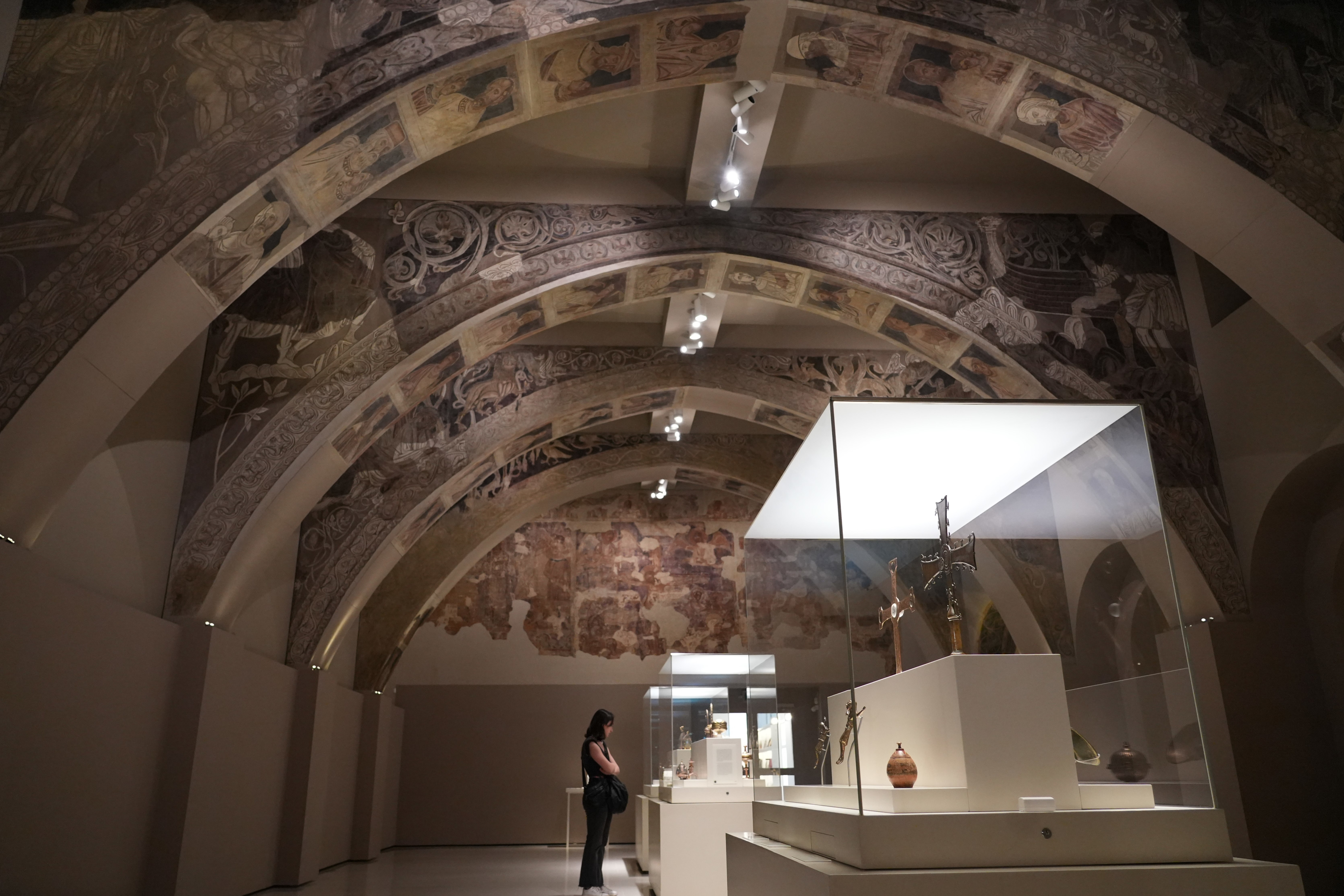
But the Vatican’s decision triggered legal disputes over the works of art, and this prompted the government in Aragon to bring the matter before the court in 2014.
44 pieces of art had originally been at the Museum of Lleida, but were removed by force by Spanish military police in 2017, after Catalonia had refused to give them up despite a court order.
At the time, Mireia Boya from the Catalan far-left party CUP called the removal an attempt “to humiliate Catalonia.”
Civil War
All the Sixena artworks were part of a larger collection of more than a thousand items removed from the monastery during the Spanish Civil War and taken to Catalonia.
In 1936, the Sixena convent was set on fire, along with all the precious artifacts inside.
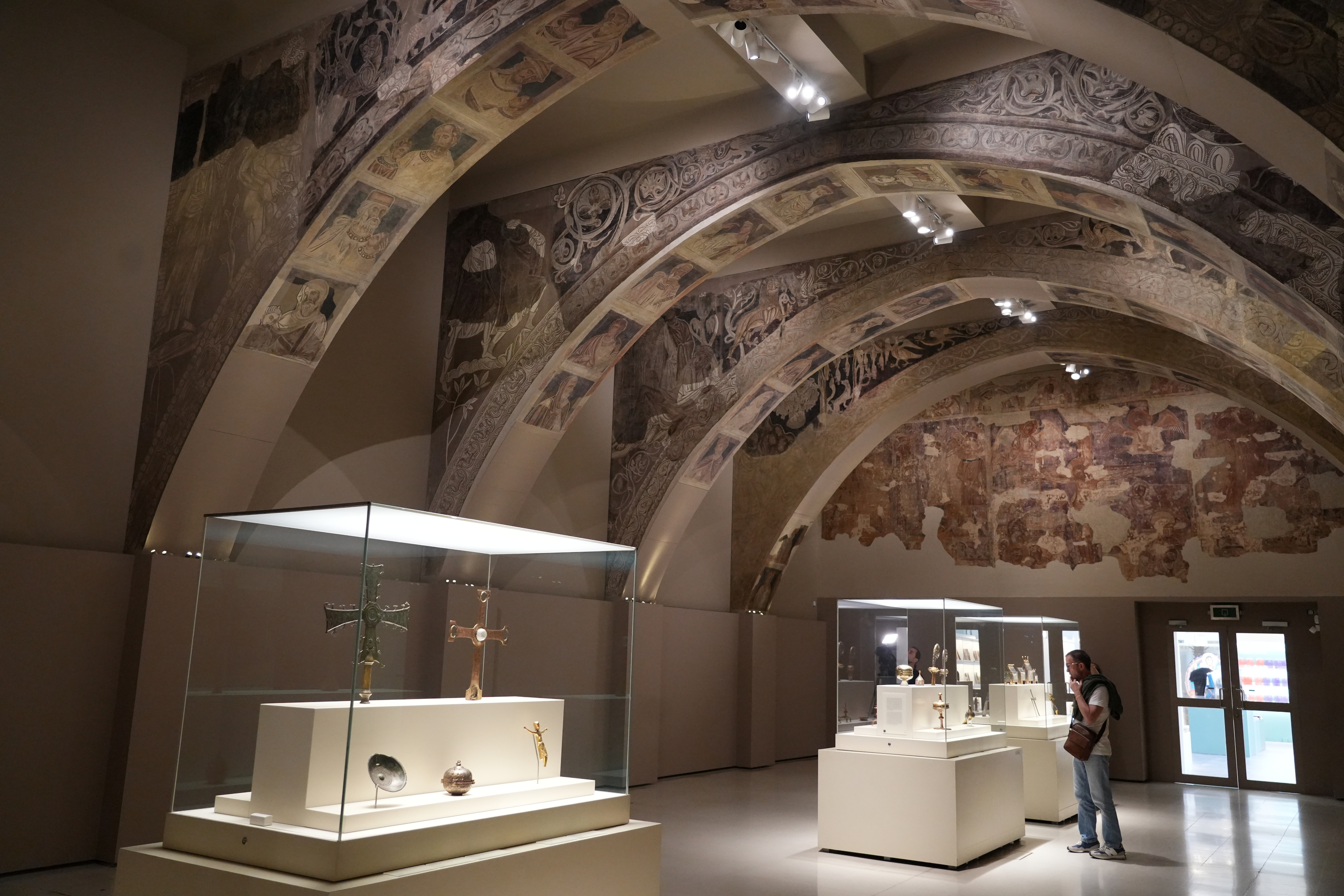
That very same year as the blaze, specialists took the art to Barcelona to safeguard and restore it. Some of the items were taken to the Lleida Museum, and others made it into the MNAC in 1940.